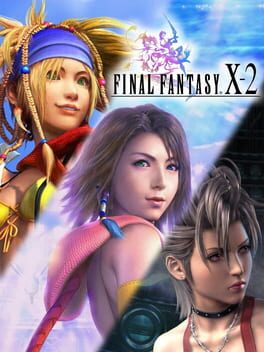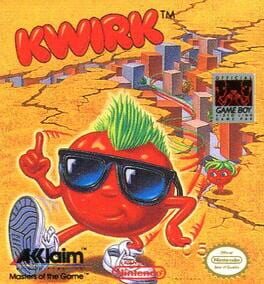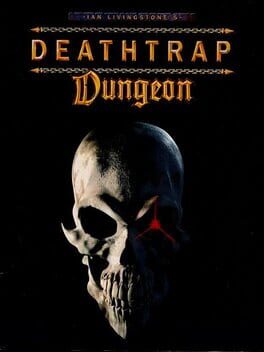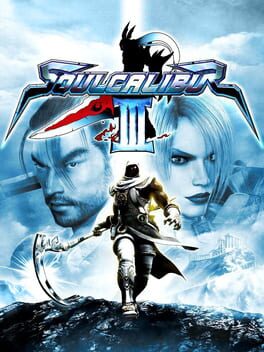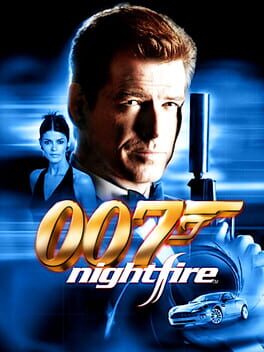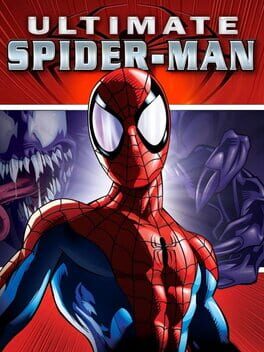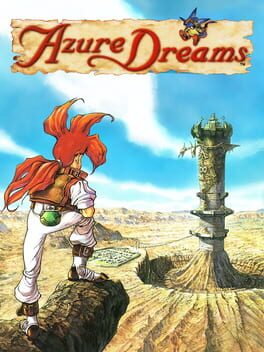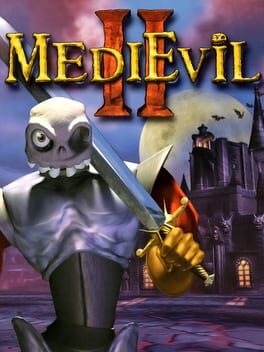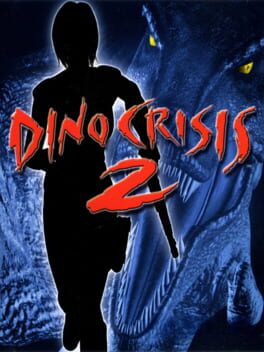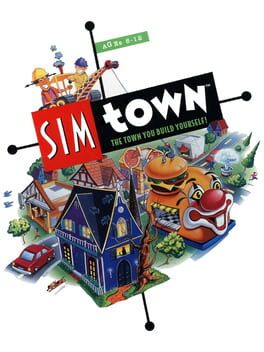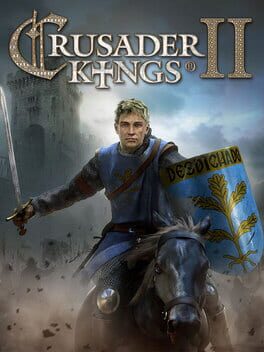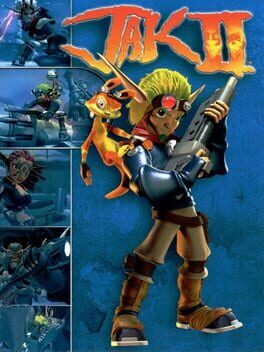mamylon
2015
Gonna put on my TV critic’s hat here and do a “recap/review,” since I want to see how much I have right.
“There’s an Anglophone city somewhere in Europe called Yarnham, which was built on top of, or with access to, a system of demiplanar unerground labyrinths referred to as the Tomb of the Gods. A college was formed, Byrgenworth, with an interest in exploring and plundering the tombs. They harvested a bunch chalices, which allowed them to access the labyrinths through ritual teleportation, which is neat.
Eventually the body of an actual God is found (Great One, if you must), and, European scholars being European scholars, someone gets the bright idea to shoot it into their own body. This feels great and gives them Wolverine-type healing powers. It becomes the trend around the quad for the boys to give each other blood transfusions until everyone’s DNA is reconfigured and they’re pumping out the good stuff.
Provost Willem, who runs the church, has the novel thought that maybe this is bad, and wants the kids to do normal college stuff instead (carving runes into their brains, continuing to hunt eldritch fuckers in the underworld, etc). One of his students, defying him, sets up shop in Yarnham and established a Healing Church, spreading the good word of the Holy Juice through the town. Many rare diseases are cured and Yarnham becomes a prosperous haven for medicine and weirdo religion. Just as the Gothic architecture craze hits this part of Europe, the city massively expands beyond the confines of the original town, and the church builds a big Grand Cathedral. There’s a little cottage industry in selling your funky-smelling blood. People inject their blood into dogs and then inject themselves with the dogs’ blood. Life is good for a while, like the first half of Boogie Nights.
It becomes apparent during Stage Four clinical trials that the miracle drug does in fact have side effects in a small minority of cases. The first stage is violent psychosis and the second stage is turning into some sort of monster—usually but not necessarily in the general region of a werewolf. This is bad PR for the Church and bad for the economy, so they hire a hunter, by the name of Gehrman, to isolate and kill the infected. Gehrman is a real-deal badass—not only a great mower-down of baddies but an inventor and tinkerer, a wizard, and a tomb prospector. For the church he sets up a workshop and develops a series of tools, trick weapons, and ideologies to streamline the hunting of beasts. He attracts the attention of a group of good- or neutral-aligned funky li’l multiversal gremlins, known as the Messengers. At some point he has some sort of encounter with a Great One and uses his mojo to create a demiplanar secondary workshop and animates a doll to keep him company. He retires, either immediately or afterwards.
Gehrman and his methods have imitators, and Hunting soon becomes another cottage industry with its own customs and factions. The Church institutionalizes the “Night of the Hunt” where everyone fucks off to their homes and everyone left wandering around is fair game for all the goths running around. Because the hunters are also using blood, some of them are having adverse events and there’s a secondary institution of Hunters of Hunters. A perfect system!
Nonetheless, things get out of hand. Historic Old Yarnham, which has been doing the blood thing for longer than the newer parts of town, hits a point-of-no-return with regards to beastliness. The Church and the hunters have the place burned down and sealed off.[2] This isn’t really effective; the Old Yarnhamites survive with their own Chalice and their own sources of blood.
With the blood-ministration-based economy obviously heading for a collapse, the Healing Church has two reformation movements, both based on the idea of seeking relief from the Beastly Plague through communion with the living Old Ones, particularly an entity called “Kos” who seems to be the creator of or an incarnation of the universe[3]. The first, The Choir, uses church resources to establish an “Orphanage,” engineering children with altered brains to commune with the old ones. This seems to succeed, and they summon Ebrietas, a child of Kos, and stash her away in the Altar of Despair beneath the Grand Cathedral.
A second splinter group, less successful but more dangerous, is the Mensis Scholars. These nerds, led at least in part by a powerful mage-scholar named Micolash, separate themselves from the ordinary Church, first by shutting themselves up in a walled-off part of the city they call “Ya’hargal, the Unseen Village,” and later by, I believe the technical term is, “wrapping themselves up in tin toil all nice and toasty and getting into the microwave and blowing themselves tae fuck.” From then on they split their operations between Ya’hargal, where they moved in a bunch of big Eldritch heavies and manipulated events in town, and the extraplanar “Nightmare” Realm, where they worked on a ritual to sidestep the beast problem by transcending humanity altogether. The Mensis people were fixated on the moon and on fertility[4] and wanted to physically impregnate a woman with a new child of Kos.
Meanwhile back in Byrgenworth, Provost Willem got a whiff of all this happening. He didn’t have the power to take these people on, but he was able to instrumentalize the remaining students of Byrgenworth for a ritual to summon a kind of counter-Old One, “Rom, the Vacuous Spider,” and tie it up in a pocket plane within the lake by Byrgenworth. The presence of Rom served to act as a sort of jammer and spoof the communications between the Church apostates and their respective gods. Old Ones already in Yarnham became physically invisible to humans. This ritual had the consequence of completely obliterating hte brainly of everyone in Byrgenworth—the students who participated in the ritual turned into mindless goop and sank into an otherworld adjunct to the Mensis Nightmare, and Willem himself suffered from sudden-onset dementia and spent the rest of his life sitting around vaguely pleased with himself, staring at the lake.
All well and good. Enter the detested Napoleon Bonaparte, whose grasping ambitions turn all of Europe in to a battlefield. British intelligence, hearing reports that the French have sent agents to Yarnham in search of something called “Paleblood,” dispatch their own most trusted agent. Stephen Maturin is a naval surgeon, a canny spy, deadly with sword and pistol, a regrettable Catholic, and an habitual user of narcotic substances for his health (although he has nothing in the way of an addictive personality), and is therefore the perfect agent to send into Yarnham.[5]
Stephen is at first unable to contact the Healing Church, especially since he has arrived on the Night of the Hunt (although the game suggests that the “night” of the hunt has gone on longer than expected, as we know from experience is often the way of quarantines with a non-compliant population). He is instead reduced to receiving a blood transfusion from a shady back alley surgeon at Iosefka’s Clinic. As soon as he receives the transfusion, he attracts the attention of the Messengers, who spirit him away to the Hunter’s Dream and outfit him with the tools and clothes of a Hunter. Here he meets the retired Gehrman, who encourages him to “go out and hunt some beasties.” Never one to turn down a particularly valuable connection, Stephen returns to Yarnham and shoots/hacks/whips his way through a randy crowd of beasts and plague-addled faux-hunters who confuse his reptilian Irish countenance for beasthood.
Stephen, in his methodical way, gathers a network of connections around Yarnham. In the church of Oedon he meets a weird little gremlin-looking guy who offers him sanctuary. Stephen mistrusts this man but does not believe him to be French-aligned and takes him up on the offer. To the church he brings two women: a sick old woman who comes to believe him to be her son and who is able to supply him his favorite tincture of laudanum (mixed with blood, as these things go—but Stephen is already a heavy user of blood, enjoying its effects); and Arianna, a sex worker who keeps him supplies with her special, sexual blood, and who reminds him of his dear Diana. He also wins the confidence of the doll by finding her original doll-body in Gehrman’s abandoned workshop and giving her back an old piece of jewelry, and he runs some errands for Gehrman, descending on his advice into Old Yarnham and retrieving a lost Chalice. Incidentally he meets a man named Alfred, who is an obvious French plant and tries to sell him a completely unsubstantiated story about a haunted castle.
After a successful bout of hunting, with a dalliance in the Hunting of Hunters, Stephen is favored by the Messengers with the emblem of the Chief of Hunters, which allows him to feign the end of the Hunt and gain access to the sealed Cathedral Ward. He also attracts the attention of the Mensis people, who knock him over the head and lock him up in Ya’hargal—although they later decide to let him go. Various parties prod Stephen in the direction of Byrgenworth, where he dives into the lake and kills the spider Rom. This reveals the Great Ones currently active in Yarnham and allows Mensis and the Choir to continue their work.
Stephen, somewhat abashed, takes on a new role as a hunter of Great Ones. He raids the Choir, destroys their orphanage, and kills Ebrietas. Then he tears his way through Ya’hargal, accesses the Nightmare of Mensis, kills Micolash and destroys the giant Great One brain that they have chained up. He is too late to prevent the prophecised birth of a new Great One, but he defeats the ambiguous Eldritch entity that serves as its wet nurse. When he goes to retrieve or kill the baby, it’s gone. Stephen returns to the Dream and is told by Gehrman that his job is done and he can sacrifice his life and his memories of Yarnham to return to his life. This is unacceptable to Stephen, who has gained exciting new addictions and valuable intelligence to be used against the French. When he refuses, Gehrman turns aggressive, and Stephen flees to Yarnham.
Stephen returns to Yarnham to find that Arianna has been impregnated and given birth to the child of Oedon. Stephen kills both Arianna and the child, then kills the gremlin-looking guy and the old woman for good measure. Adopting the methods of the Church, and realizing that nearly everyone in Yarnham has died over the course of his adventures, he finishes the job, killiing the French agent, his patron hunters, and the Hunters of Hunters. The only person whom he does not judge to either be a potential carrier for the beast-plague or a threat to his person is empty-brained Provost Willem, who seemed like a good guy in his day. He spares himself, knowing that he doesn’t have an addictive personality and will never succumb to beasthood, and in fact eats a stitched-together umbilical cord before confronting Gehrman, feeling like he could do with some eldritch Insight to return to his British handlers.
Stephen kills Gehrman and then encounters a Great One, which seems to be the newly-born “Mergo,” rescued from the care of Gernham [6]. Mergo takes Stephen to be his father, and only turns aggressive when Stephen rejects his affections. After killing Mergo, Stephen achieves the enlightenment denies to his predecessor and sloughs off his mortal Irish-Catalan body, incarnating as a tiny worm in the care of the Doll.[7]”
Great game. I like it even better than Dark Souls—the combat’s a bit cleaner, the worldbuilding is more evocative, and the evocation of the larger series is much better handled than Dark Souls’ hamfisted use of Jack Aubrey.
[1] Going off of the Umbilical Cord in the original workshop, which seems suggestive.
[2]Chronology is fuzzy here.
[3] This is all interpretive, but between the name “Kosm,” the title “Daughter of the Cosmos,” and the attribution of Rom’s powers to Kos, it all seems to track.
[4]Hence the on-the-nose name “Mensus.”
[5]It’s all kept a bit hazy—I think the O’Brian estate didn’t want FromSoft stepping on any toes—but what clues we are given suggest that the game is set between “The Mauritius Command” and “Desolation Island.” Stephen is unmarried, has reasons to avoid showing his face in France, and his particular friend Jack Aubrey is ashore for the occasion of the birth of his son George.
[6] I’ve done enough shameful Wiki diving to know that this isn’t canon, but internal to my playthrough it’s definitely what happened. Mensis attempted to summon the moon, a child is born, the child winds up missing while you have your fight with the Wet Nurse which pointedly takes place in darkness. It’s clear that Gehrman snuck in, took the baby back to the Dream, and wanted to raise it as his father.
[7] How Stephen manages to escape this jam and return to his humble room at the Grapes in time for the start of “Desolation Island,” and the unsettling news which sets him on the road to his fateful reunion with Diana in the United States, is left up to the reader. But we know that Stephen has a strong constitution and has survived worse setbacks, like when he tripped and knocked his head against the cannon and needed to be trepanned.
“There’s an Anglophone city somewhere in Europe called Yarnham, which was built on top of, or with access to, a system of demiplanar unerground labyrinths referred to as the Tomb of the Gods. A college was formed, Byrgenworth, with an interest in exploring and plundering the tombs. They harvested a bunch chalices, which allowed them to access the labyrinths through ritual teleportation, which is neat.
Eventually the body of an actual God is found (Great One, if you must), and, European scholars being European scholars, someone gets the bright idea to shoot it into their own body. This feels great and gives them Wolverine-type healing powers. It becomes the trend around the quad for the boys to give each other blood transfusions until everyone’s DNA is reconfigured and they’re pumping out the good stuff.
Provost Willem, who runs the church, has the novel thought that maybe this is bad, and wants the kids to do normal college stuff instead (carving runes into their brains, continuing to hunt eldritch fuckers in the underworld, etc). One of his students, defying him, sets up shop in Yarnham and established a Healing Church, spreading the good word of the Holy Juice through the town. Many rare diseases are cured and Yarnham becomes a prosperous haven for medicine and weirdo religion. Just as the Gothic architecture craze hits this part of Europe, the city massively expands beyond the confines of the original town, and the church builds a big Grand Cathedral. There’s a little cottage industry in selling your funky-smelling blood. People inject their blood into dogs and then inject themselves with the dogs’ blood. Life is good for a while, like the first half of Boogie Nights.
It becomes apparent during Stage Four clinical trials that the miracle drug does in fact have side effects in a small minority of cases. The first stage is violent psychosis and the second stage is turning into some sort of monster—usually but not necessarily in the general region of a werewolf. This is bad PR for the Church and bad for the economy, so they hire a hunter, by the name of Gehrman, to isolate and kill the infected. Gehrman is a real-deal badass—not only a great mower-down of baddies but an inventor and tinkerer, a wizard, and a tomb prospector. For the church he sets up a workshop and develops a series of tools, trick weapons, and ideologies to streamline the hunting of beasts. He attracts the attention of a group of good- or neutral-aligned funky li’l multiversal gremlins, known as the Messengers. At some point he has some sort of encounter with a Great One and uses his mojo to create a demiplanar secondary workshop and animates a doll to keep him company. He retires, either immediately or afterwards.
Gehrman and his methods have imitators, and Hunting soon becomes another cottage industry with its own customs and factions. The Church institutionalizes the “Night of the Hunt” where everyone fucks off to their homes and everyone left wandering around is fair game for all the goths running around. Because the hunters are also using blood, some of them are having adverse events and there’s a secondary institution of Hunters of Hunters. A perfect system!
Nonetheless, things get out of hand. Historic Old Yarnham, which has been doing the blood thing for longer than the newer parts of town, hits a point-of-no-return with regards to beastliness. The Church and the hunters have the place burned down and sealed off.[2] This isn’t really effective; the Old Yarnhamites survive with their own Chalice and their own sources of blood.
With the blood-ministration-based economy obviously heading for a collapse, the Healing Church has two reformation movements, both based on the idea of seeking relief from the Beastly Plague through communion with the living Old Ones, particularly an entity called “Kos” who seems to be the creator of or an incarnation of the universe[3]. The first, The Choir, uses church resources to establish an “Orphanage,” engineering children with altered brains to commune with the old ones. This seems to succeed, and they summon Ebrietas, a child of Kos, and stash her away in the Altar of Despair beneath the Grand Cathedral.
A second splinter group, less successful but more dangerous, is the Mensis Scholars. These nerds, led at least in part by a powerful mage-scholar named Micolash, separate themselves from the ordinary Church, first by shutting themselves up in a walled-off part of the city they call “Ya’hargal, the Unseen Village,” and later by, I believe the technical term is, “wrapping themselves up in tin toil all nice and toasty and getting into the microwave and blowing themselves tae fuck.” From then on they split their operations between Ya’hargal, where they moved in a bunch of big Eldritch heavies and manipulated events in town, and the extraplanar “Nightmare” Realm, where they worked on a ritual to sidestep the beast problem by transcending humanity altogether. The Mensis people were fixated on the moon and on fertility[4] and wanted to physically impregnate a woman with a new child of Kos.
Meanwhile back in Byrgenworth, Provost Willem got a whiff of all this happening. He didn’t have the power to take these people on, but he was able to instrumentalize the remaining students of Byrgenworth for a ritual to summon a kind of counter-Old One, “Rom, the Vacuous Spider,” and tie it up in a pocket plane within the lake by Byrgenworth. The presence of Rom served to act as a sort of jammer and spoof the communications between the Church apostates and their respective gods. Old Ones already in Yarnham became physically invisible to humans. This ritual had the consequence of completely obliterating hte brainly of everyone in Byrgenworth—the students who participated in the ritual turned into mindless goop and sank into an otherworld adjunct to the Mensis Nightmare, and Willem himself suffered from sudden-onset dementia and spent the rest of his life sitting around vaguely pleased with himself, staring at the lake.
All well and good. Enter the detested Napoleon Bonaparte, whose grasping ambitions turn all of Europe in to a battlefield. British intelligence, hearing reports that the French have sent agents to Yarnham in search of something called “Paleblood,” dispatch their own most trusted agent. Stephen Maturin is a naval surgeon, a canny spy, deadly with sword and pistol, a regrettable Catholic, and an habitual user of narcotic substances for his health (although he has nothing in the way of an addictive personality), and is therefore the perfect agent to send into Yarnham.[5]
Stephen is at first unable to contact the Healing Church, especially since he has arrived on the Night of the Hunt (although the game suggests that the “night” of the hunt has gone on longer than expected, as we know from experience is often the way of quarantines with a non-compliant population). He is instead reduced to receiving a blood transfusion from a shady back alley surgeon at Iosefka’s Clinic. As soon as he receives the transfusion, he attracts the attention of the Messengers, who spirit him away to the Hunter’s Dream and outfit him with the tools and clothes of a Hunter. Here he meets the retired Gehrman, who encourages him to “go out and hunt some beasties.” Never one to turn down a particularly valuable connection, Stephen returns to Yarnham and shoots/hacks/whips his way through a randy crowd of beasts and plague-addled faux-hunters who confuse his reptilian Irish countenance for beasthood.
Stephen, in his methodical way, gathers a network of connections around Yarnham. In the church of Oedon he meets a weird little gremlin-looking guy who offers him sanctuary. Stephen mistrusts this man but does not believe him to be French-aligned and takes him up on the offer. To the church he brings two women: a sick old woman who comes to believe him to be her son and who is able to supply him his favorite tincture of laudanum (mixed with blood, as these things go—but Stephen is already a heavy user of blood, enjoying its effects); and Arianna, a sex worker who keeps him supplies with her special, sexual blood, and who reminds him of his dear Diana. He also wins the confidence of the doll by finding her original doll-body in Gehrman’s abandoned workshop and giving her back an old piece of jewelry, and he runs some errands for Gehrman, descending on his advice into Old Yarnham and retrieving a lost Chalice. Incidentally he meets a man named Alfred, who is an obvious French plant and tries to sell him a completely unsubstantiated story about a haunted castle.
After a successful bout of hunting, with a dalliance in the Hunting of Hunters, Stephen is favored by the Messengers with the emblem of the Chief of Hunters, which allows him to feign the end of the Hunt and gain access to the sealed Cathedral Ward. He also attracts the attention of the Mensis people, who knock him over the head and lock him up in Ya’hargal—although they later decide to let him go. Various parties prod Stephen in the direction of Byrgenworth, where he dives into the lake and kills the spider Rom. This reveals the Great Ones currently active in Yarnham and allows Mensis and the Choir to continue their work.
Stephen, somewhat abashed, takes on a new role as a hunter of Great Ones. He raids the Choir, destroys their orphanage, and kills Ebrietas. Then he tears his way through Ya’hargal, accesses the Nightmare of Mensis, kills Micolash and destroys the giant Great One brain that they have chained up. He is too late to prevent the prophecised birth of a new Great One, but he defeats the ambiguous Eldritch entity that serves as its wet nurse. When he goes to retrieve or kill the baby, it’s gone. Stephen returns to the Dream and is told by Gehrman that his job is done and he can sacrifice his life and his memories of Yarnham to return to his life. This is unacceptable to Stephen, who has gained exciting new addictions and valuable intelligence to be used against the French. When he refuses, Gehrman turns aggressive, and Stephen flees to Yarnham.
Stephen returns to Yarnham to find that Arianna has been impregnated and given birth to the child of Oedon. Stephen kills both Arianna and the child, then kills the gremlin-looking guy and the old woman for good measure. Adopting the methods of the Church, and realizing that nearly everyone in Yarnham has died over the course of his adventures, he finishes the job, killiing the French agent, his patron hunters, and the Hunters of Hunters. The only person whom he does not judge to either be a potential carrier for the beast-plague or a threat to his person is empty-brained Provost Willem, who seemed like a good guy in his day. He spares himself, knowing that he doesn’t have an addictive personality and will never succumb to beasthood, and in fact eats a stitched-together umbilical cord before confronting Gehrman, feeling like he could do with some eldritch Insight to return to his British handlers.
Stephen kills Gehrman and then encounters a Great One, which seems to be the newly-born “Mergo,” rescued from the care of Gernham [6]. Mergo takes Stephen to be his father, and only turns aggressive when Stephen rejects his affections. After killing Mergo, Stephen achieves the enlightenment denies to his predecessor and sloughs off his mortal Irish-Catalan body, incarnating as a tiny worm in the care of the Doll.[7]”
Great game. I like it even better than Dark Souls—the combat’s a bit cleaner, the worldbuilding is more evocative, and the evocation of the larger series is much better handled than Dark Souls’ hamfisted use of Jack Aubrey.
[1] Going off of the Umbilical Cord in the original workshop, which seems suggestive.
[2]Chronology is fuzzy here.
[3] This is all interpretive, but between the name “Kosm,” the title “Daughter of the Cosmos,” and the attribution of Rom’s powers to Kos, it all seems to track.
[4]Hence the on-the-nose name “Mensus.”
[5]It’s all kept a bit hazy—I think the O’Brian estate didn’t want FromSoft stepping on any toes—but what clues we are given suggest that the game is set between “The Mauritius Command” and “Desolation Island.” Stephen is unmarried, has reasons to avoid showing his face in France, and his particular friend Jack Aubrey is ashore for the occasion of the birth of his son George.
[6] I’ve done enough shameful Wiki diving to know that this isn’t canon, but internal to my playthrough it’s definitely what happened. Mensis attempted to summon the moon, a child is born, the child winds up missing while you have your fight with the Wet Nurse which pointedly takes place in darkness. It’s clear that Gehrman snuck in, took the baby back to the Dream, and wanted to raise it as his father.
[7] How Stephen manages to escape this jam and return to his humble room at the Grapes in time for the start of “Desolation Island,” and the unsettling news which sets him on the road to his fateful reunion with Diana in the United States, is left up to the reader. But we know that Stephen has a strong constitution and has survived worse setbacks, like when he tripped and knocked his head against the cannon and needed to be trepanned.
2003
This review contains spoilers
Final Fantasy X-2 probably peaks with the opening cinematic, which is fine, because the opening cinematic contains the whole game in it. On the surface, we have Yuna, inexplicably doing a pop concert instead of the normal Yuna stuff (crying) that we’re used to from the previous game. A few minutes later into the game, we learn that it’s not really Yuna but Leblanc, the game’s thin attempt at a Gary Oak-type rival character, who has stolen Yuna’s Garment Grid in order to impersonate her. Much later, we learn that it’s not really Leblanc singing the song, because the Dressphere plugged into the Garment Grid is channeling the consciousness of Lenne, the thousand-year-dead summoner whose tragic love story forms the overplot of the game. Upon a relisten, the lyrics of “Real Emotion,” only a bit less hamhandedly than the later “1000 Words,” are a message from Lenne to her lover Shuyin. So those first two minutes are this very tricky, layered thing, but, as with everything else about X-2 and appropriately for a game primarily about clothes, the depths are all in the surface: the interesting and compelling idea here is Yuna playing a pop concert.
Almost everything about X-2’s story that isn’t directly about Yuna is forgettable if not outright stupid, but what the game does with the character of Yuna is a phenomenal little magic trick. Yuna from the first game is maybe my favorite character in a video game, and we see her for most of that game in a particular mode: she’s spent her life preparing herself to be sacrificed into the maw of the Yevon death-religion, and she walks and talks like her body is an expensive outfit that she is only borrowing and has to return in good condition. X-2 shocks us right away with the kinetic, sexual, effervescent Yuna, whom I’ve been tweeting about under the name of “College Yuna,” and (if you’re anything like me) you spend the whole game chasing that high, wanting to get to know that Yuna, and largely ignoring anything else.
College Yuna works because the seeds of that character are planted by the earlier (much better) game: we’ve already seen Yuna’s sexuality, her hints of vanity, her sense of humor, the way she sticks to and admires her cousin Rikku. X-2 makes the compelling argument that Yuna would semi-authentically bounce back from tragedy and embrace those dormant parts of her personality. Where the worldbuilding of the game works—mostly early on—it’s in the way that Spira mirrors Yuna’s development. I am moved by the game’s depiction of an economic boom, a society that is not utopian but on an upswing, in which people are able to pursue opportunities that weren’t available to them before. I’m tickled by some of the D-plots involving bit characters from the previous game who are sort of caught up on the ennui of choice. I particularly liked Isaaru, one of the more devout Yevonites from the previous game, becoming a petty con artist in the Zanarkand ruins (all the more so, I think, because I fell off that plotline early in the game and never got to his redemption arc, which I’m sure was cloying). This stuff is particularly resonant playing this in the beginning of 2021: Republicans are out of the presidency and Senate and the people I love are starting to get vaccinated against COVID-19. It’s not an Eternal Calm—things are fraying already—but there is a similar sense that death is no longer the dominant presence and the organizing factor of our lives.
The other thing that makes Yuna work so well is Hedy Buress, who gives probably my favorite voice performance in a video game. Most of the grace notes in the annoying parts of this game are line readings that Buress just nails. There’s a pretty awful speech right before the end, a sort of lesser recapitulation of Auron’s big corny-but-effective “this is your story” speech from the previous games, but she preludes it by telling Mevyn Nooj “I don’t like your plan. It sucks!” in a way that hits ten times as hard as anything that follows. In the game’s more serious, tense moments, Yuna falls back into the breathy, halting voice that she used in the previous game, but in lighter moments you can hear her making a physical effort to project herself, a sort of hypomanic bark. You can sense that the happiness she feels is delicate, but authentic, but also that she’s always trying to convince people of its authenticity. (This is particularly true when she’s around her fretful cousin Brother, whose characterization in this some of my friends have decried as a sort of thoughtless gesture towards cousin-incest, but that’s not how I read it. You see these characters in sort of a competition to out-act each other.)
The best line reading in the game happens after the backrub minigame. Yuna, disguised in a rubbery jumpsuit she stole from a henchwoman who was relaxing in a hot spring, sneaks into Leblanc’s headquarters only to learn that she’s accidentally disguised herself as Leblanc’s masseuse, and has to give her a massage before you can sneak off. You, the player, see Leblanc’s back divided into a three-by-three grid, and you pick a point in the grid to rub, and then a color or noise indicator tells you whether you picked the right one. If you do roughly average on this over the course of fifteen attempts, Leblanc falls asleep. “She fell asleep?” asks Yuna, and then looks at her hand in awe and says, “I’m that good?” I cannot express to you how funny and delightful this is in context.
The entire game is full of bullshit like that—arbitrary minigames and little goofy episodes, some of them mandatory, some of them strongly suggested, ohers hidden from view. You get in little shootouts with cactuars, wrangle chocobos, talk to random women to propose marriage on behalf of a merchant’s shameful bachelor son. You watch security cameras and press “Y” when you see a clue. All of this stuff was thrown together cheaply to fill out a game that was made as a budget-saving measure at a time when the studio had bankrupted itself making a supposedly-shitty movie, but, secretly, it makes the game. The sheer weight of goofy little episodes, all of which feel like stories from my college years that were hilarious at the time and impossible to explain now, make the game feel lived-in in a way that the main plot doesn’t.
The core gameplay, to be fair, is exquisite. FFX-1 ditched the active time battle system of previous games for a more strictly turn-based, strategically complex system that forced you to keep all seven characters (well, six of them) in rotation. FFX-2, in keeping with its more kinetic, bodily nature, brings the active time back with a vengeance, pacing it a little faster than any other game I’ve played. The timer only stops when you’re in the middle of one of your Spherechanges, doing a cheeky hard-PG-13 quick-change into an outfit corresponding to a class, and the game incentivizes you to do this often both because the classes provide complementary strategic options and because it slows things the fuck down when they get frantic. I appreciate that this is a game where the random encounters are often harder than the boss fights: it’s easy to get overwhelmed by three of the little wolf enemies, or to run into some massive mech in the middle of Kilika Woods that takes out your whole team in a hit.
But most importantly, the combat expresses character. In X-1, the game is always reminding you that the fiends you fight are the spirits of the dead denied last rights, who litter the roads like weeds as a result of a thousand years of religious purges, Sin attacks, and then, Spira spiralling, fiend attacks. In X-2, although the fiends are the same (God forbid this game should create a new enemy model; even half the bosses are “corrupted” forms of X-1’s aeons, and the final boss just uses all of Tidus’ Overdrive attacks), the context is totally different. The point of every fight in the game is that, as Rikku says in the opening cinematic, it’s showtime, girls: Yuna and her friends are having a great time and showing off for one another. This is the only time when Rikku, who was a lovely character in the first game but doesn’t really have anything to do here, and Paine, who like every other character original to this game is never really compelling, comes alive. The little snippets of dialogue that accompany fights are crucial here. Every time you take down an enemy and all three girls do a pose and go “Gullwings get the goal!” it is a pure dopamine trip.
The dressphere thing is hacked into the storyline by way of the Lenne thing. Lenne inhabits the songstress dressphere, evidently an artifact from Zanarkand, and every time Yuna puts it on, she, in essence, becomes Lenne. There’s an interesting philosophy of fashion here, maybe: I’m not the right person to discuss it because most of my clothes are bought for me personally by a VP-level exec at TJ Maxx / Marshalls (this is true and I’m not elaborating on it for you or anyone). It raises some interesting questions about Yuna’s default outfit—the Gunner—which has the Jecht logo emblazoned in barbed wire across her (lovingly remastered for Switch) breasts. Of course it’s a sexy wedding ring, a big sign that says “look, but don’t touch.” By way of Jecht, it’s also the emblem of Sin, Yuna’s conquered enemy. And it’s just as likely to be an artifact of Zanarkand, belonging to some groupie of the “real” Jecht, whose son may well have been Shuyin, the “real” Tidus. Yuna spends a lot of this game saying that everything is connected but never really follows the concept through. If Tidus is only the Fayth’s dim memory of a person who lived and died during the Machina War, then it’s probably Shuyin, and it follows that Tidus’ feelings for Yuna were only a dim memory of Shuyin’s feelings for Lenne, and those same feelings are what nearly precipitates the end of the world in this game. Yuna’s yearning for Tidus in turn might be a desire for a lost history that’s much uglier than she imagines.
But the game never goes anywhere with these themes, because it’s stupid. (If you want a good story about the creeping revelation that your deepest feelings are really just something that someone may have felt once and the feeling latched onto you completely by accident, that’s what Blade Runner 2049 is about, and that movie—I can’t explain this but I’m right—somehow has less Jared Leto in it than this game). The main plotline of this game simply isn’t good. You can tell that someone early in the dev process decided that X-2 needed its own version of Sin, and they came up with Vegnagun, which is sort of the Mechagodzilla of Sin. But the main characters literally don’t see Vegnagun except in thousand-year-old movies until the very end of the game. In the original game, you feel Sin in every scene, never mind that it actually shows up every five hours or so. Remember in X-1 after Operation Mi’ihen when Tidus suddenly knows that what Auron had told him was true, that the giant death-whale could be nothing else but a thousand-year-magnified incarnation of his father’s rage, and he dives recklessly into the ocean in search of some sort of confrontation? Literally nothing like that happens in this game.
I am maybe being unfair on X-2’s handling of the subject of emotional transference and mirroring. The operating logic of the game is pop music, and pop is driven, it seems to me, by the assumption that feelings are mostly universal and therefore best expressed in simple and universal terms. I’m writing this from the year 2021 when we have grown used to the idea of video games that are also albums, and that’s what X-2 most wants to be, even if it doesn’t know it. There are only two original pop songs, both of which are standout moments of the game, and if they’d thrown in a third one toward the end I would probably be giving the game four stars right now. Instead we get the trio of badly-characterized male characters—Gippal, the Al Bhed faction leader, is so clearly a rejected Kingdom Hearts design that he’s revolting to look at—giving a speech with a bad metaphor about a ship, essentially to the effect that in the name of unity we shouldn’t impeach and convict Donald Trump. (Yuna, too, is a basically a Taylor Swift pop liberal in this, but it’s completely in keeping with her characterization—even several of my friends who are less tepidly socialist than I am and are more readily aggreived by perceived acts of centrism than I agree that, yeah, of course Yuna is a centrist. It’s what it is.) This speech is followed by a fairly cool scene of Yuna surfing the airship, and then cuts to black.
That’s the “Normal Ending,” and it’s the one I got, although for the life of me I can’t figure out why. I specifically Googled everything you needed to do to get the Good Ending, which I thought I was spoiled for: the Fayth reappear, and allow Yuna to see Tidus in the Farplane for just a moment, assuring her that when she finally comes to rest after a long and fruitful life he will be there waiting for her. I like when video games let me cry and I didn’t want to fuck things up for Yuna so I went for the walkthrough, which is against my general principles, and made sure to talk to Maechen in chapter 3 and to whistle in the Farplane. I guess I must have whistled one too few times, because the Fayth didn’t appear. So I pulled up Youtube on the Roku and searched “FFX-2 good ending” and, after fifteen years with the wrong impression, was completely blindsided by the actual good ending, where the Fayth straight-up bring Tidus back to life and there’s an unbelievably hyperbolic scene of everyone cheering while he and Yuna run off to fuck on a beach somewhere. Of course this affected me deeply; I’m still trying to figure out how exactly.
When I started this game I tweeted to the effect that the test was whether this would be one of the long-awaited sequels that instantly asserted for me its canonicity, a la the Deadwood movie or The Dark Knight Strikes Again, or whether it would be a sequel that registered as regrettable fanfic, a la the Buffy comics or The Legend of Korra. After watching the “normal ending,” and before watching the “good ending,” I tweeted a quick reply: “it’s fanfic.” Even within that fanfic, the “good ending” describes something that did not happen: apparently I, somehow, didn’t earn it. That which was lost—one of the most affecting fictional character deaths of my teenage years—remains lost to me. And even if it had happened, even if I were determined to accept the “perfect ending” as the “true ending,” it makes no sense, because the whole story that leads to the Fayth gifting Tidus back to Yuna is such bullshit (Vegnagun!), and because that scene so exactly mirrors the kind of thing that people in movies hallucinate as they’re bleeding out from, say, falling off an airship.
It’s simply not real—not real in the way that it was real when Tidus faded away to begin with. I cannot accept that this is what happened next because there’s too much baggage that I would have to take along with it. It’s not even part of the game, but just something I watched on Youtube. Eerily, this puts me in the exact position that Yuna’s in at the beginning of the game when she sees the sphere of Shuyin. She knows very well that it’s just a video: it’s not Tidus. “It’s just his face,” she says. She saw him fade just the same as I did. But once you’ve seen it, you can’t just dismiss it. The moment you let it into your brain, the idea of a restoration of things lost and a perfect happiness is something that you can’t get rid of.
Almost everything about X-2’s story that isn’t directly about Yuna is forgettable if not outright stupid, but what the game does with the character of Yuna is a phenomenal little magic trick. Yuna from the first game is maybe my favorite character in a video game, and we see her for most of that game in a particular mode: she’s spent her life preparing herself to be sacrificed into the maw of the Yevon death-religion, and she walks and talks like her body is an expensive outfit that she is only borrowing and has to return in good condition. X-2 shocks us right away with the kinetic, sexual, effervescent Yuna, whom I’ve been tweeting about under the name of “College Yuna,” and (if you’re anything like me) you spend the whole game chasing that high, wanting to get to know that Yuna, and largely ignoring anything else.
College Yuna works because the seeds of that character are planted by the earlier (much better) game: we’ve already seen Yuna’s sexuality, her hints of vanity, her sense of humor, the way she sticks to and admires her cousin Rikku. X-2 makes the compelling argument that Yuna would semi-authentically bounce back from tragedy and embrace those dormant parts of her personality. Where the worldbuilding of the game works—mostly early on—it’s in the way that Spira mirrors Yuna’s development. I am moved by the game’s depiction of an economic boom, a society that is not utopian but on an upswing, in which people are able to pursue opportunities that weren’t available to them before. I’m tickled by some of the D-plots involving bit characters from the previous game who are sort of caught up on the ennui of choice. I particularly liked Isaaru, one of the more devout Yevonites from the previous game, becoming a petty con artist in the Zanarkand ruins (all the more so, I think, because I fell off that plotline early in the game and never got to his redemption arc, which I’m sure was cloying). This stuff is particularly resonant playing this in the beginning of 2021: Republicans are out of the presidency and Senate and the people I love are starting to get vaccinated against COVID-19. It’s not an Eternal Calm—things are fraying already—but there is a similar sense that death is no longer the dominant presence and the organizing factor of our lives.
The other thing that makes Yuna work so well is Hedy Buress, who gives probably my favorite voice performance in a video game. Most of the grace notes in the annoying parts of this game are line readings that Buress just nails. There’s a pretty awful speech right before the end, a sort of lesser recapitulation of Auron’s big corny-but-effective “this is your story” speech from the previous games, but she preludes it by telling Mevyn Nooj “I don’t like your plan. It sucks!” in a way that hits ten times as hard as anything that follows. In the game’s more serious, tense moments, Yuna falls back into the breathy, halting voice that she used in the previous game, but in lighter moments you can hear her making a physical effort to project herself, a sort of hypomanic bark. You can sense that the happiness she feels is delicate, but authentic, but also that she’s always trying to convince people of its authenticity. (This is particularly true when she’s around her fretful cousin Brother, whose characterization in this some of my friends have decried as a sort of thoughtless gesture towards cousin-incest, but that’s not how I read it. You see these characters in sort of a competition to out-act each other.)
The best line reading in the game happens after the backrub minigame. Yuna, disguised in a rubbery jumpsuit she stole from a henchwoman who was relaxing in a hot spring, sneaks into Leblanc’s headquarters only to learn that she’s accidentally disguised herself as Leblanc’s masseuse, and has to give her a massage before you can sneak off. You, the player, see Leblanc’s back divided into a three-by-three grid, and you pick a point in the grid to rub, and then a color or noise indicator tells you whether you picked the right one. If you do roughly average on this over the course of fifteen attempts, Leblanc falls asleep. “She fell asleep?” asks Yuna, and then looks at her hand in awe and says, “I’m that good?” I cannot express to you how funny and delightful this is in context.
The entire game is full of bullshit like that—arbitrary minigames and little goofy episodes, some of them mandatory, some of them strongly suggested, ohers hidden from view. You get in little shootouts with cactuars, wrangle chocobos, talk to random women to propose marriage on behalf of a merchant’s shameful bachelor son. You watch security cameras and press “Y” when you see a clue. All of this stuff was thrown together cheaply to fill out a game that was made as a budget-saving measure at a time when the studio had bankrupted itself making a supposedly-shitty movie, but, secretly, it makes the game. The sheer weight of goofy little episodes, all of which feel like stories from my college years that were hilarious at the time and impossible to explain now, make the game feel lived-in in a way that the main plot doesn’t.
The core gameplay, to be fair, is exquisite. FFX-1 ditched the active time battle system of previous games for a more strictly turn-based, strategically complex system that forced you to keep all seven characters (well, six of them) in rotation. FFX-2, in keeping with its more kinetic, bodily nature, brings the active time back with a vengeance, pacing it a little faster than any other game I’ve played. The timer only stops when you’re in the middle of one of your Spherechanges, doing a cheeky hard-PG-13 quick-change into an outfit corresponding to a class, and the game incentivizes you to do this often both because the classes provide complementary strategic options and because it slows things the fuck down when they get frantic. I appreciate that this is a game where the random encounters are often harder than the boss fights: it’s easy to get overwhelmed by three of the little wolf enemies, or to run into some massive mech in the middle of Kilika Woods that takes out your whole team in a hit.
But most importantly, the combat expresses character. In X-1, the game is always reminding you that the fiends you fight are the spirits of the dead denied last rights, who litter the roads like weeds as a result of a thousand years of religious purges, Sin attacks, and then, Spira spiralling, fiend attacks. In X-2, although the fiends are the same (God forbid this game should create a new enemy model; even half the bosses are “corrupted” forms of X-1’s aeons, and the final boss just uses all of Tidus’ Overdrive attacks), the context is totally different. The point of every fight in the game is that, as Rikku says in the opening cinematic, it’s showtime, girls: Yuna and her friends are having a great time and showing off for one another. This is the only time when Rikku, who was a lovely character in the first game but doesn’t really have anything to do here, and Paine, who like every other character original to this game is never really compelling, comes alive. The little snippets of dialogue that accompany fights are crucial here. Every time you take down an enemy and all three girls do a pose and go “Gullwings get the goal!” it is a pure dopamine trip.
The dressphere thing is hacked into the storyline by way of the Lenne thing. Lenne inhabits the songstress dressphere, evidently an artifact from Zanarkand, and every time Yuna puts it on, she, in essence, becomes Lenne. There’s an interesting philosophy of fashion here, maybe: I’m not the right person to discuss it because most of my clothes are bought for me personally by a VP-level exec at TJ Maxx / Marshalls (this is true and I’m not elaborating on it for you or anyone). It raises some interesting questions about Yuna’s default outfit—the Gunner—which has the Jecht logo emblazoned in barbed wire across her (lovingly remastered for Switch) breasts. Of course it’s a sexy wedding ring, a big sign that says “look, but don’t touch.” By way of Jecht, it’s also the emblem of Sin, Yuna’s conquered enemy. And it’s just as likely to be an artifact of Zanarkand, belonging to some groupie of the “real” Jecht, whose son may well have been Shuyin, the “real” Tidus. Yuna spends a lot of this game saying that everything is connected but never really follows the concept through. If Tidus is only the Fayth’s dim memory of a person who lived and died during the Machina War, then it’s probably Shuyin, and it follows that Tidus’ feelings for Yuna were only a dim memory of Shuyin’s feelings for Lenne, and those same feelings are what nearly precipitates the end of the world in this game. Yuna’s yearning for Tidus in turn might be a desire for a lost history that’s much uglier than she imagines.
But the game never goes anywhere with these themes, because it’s stupid. (If you want a good story about the creeping revelation that your deepest feelings are really just something that someone may have felt once and the feeling latched onto you completely by accident, that’s what Blade Runner 2049 is about, and that movie—I can’t explain this but I’m right—somehow has less Jared Leto in it than this game). The main plotline of this game simply isn’t good. You can tell that someone early in the dev process decided that X-2 needed its own version of Sin, and they came up with Vegnagun, which is sort of the Mechagodzilla of Sin. But the main characters literally don’t see Vegnagun except in thousand-year-old movies until the very end of the game. In the original game, you feel Sin in every scene, never mind that it actually shows up every five hours or so. Remember in X-1 after Operation Mi’ihen when Tidus suddenly knows that what Auron had told him was true, that the giant death-whale could be nothing else but a thousand-year-magnified incarnation of his father’s rage, and he dives recklessly into the ocean in search of some sort of confrontation? Literally nothing like that happens in this game.
I am maybe being unfair on X-2’s handling of the subject of emotional transference and mirroring. The operating logic of the game is pop music, and pop is driven, it seems to me, by the assumption that feelings are mostly universal and therefore best expressed in simple and universal terms. I’m writing this from the year 2021 when we have grown used to the idea of video games that are also albums, and that’s what X-2 most wants to be, even if it doesn’t know it. There are only two original pop songs, both of which are standout moments of the game, and if they’d thrown in a third one toward the end I would probably be giving the game four stars right now. Instead we get the trio of badly-characterized male characters—Gippal, the Al Bhed faction leader, is so clearly a rejected Kingdom Hearts design that he’s revolting to look at—giving a speech with a bad metaphor about a ship, essentially to the effect that in the name of unity we shouldn’t impeach and convict Donald Trump. (Yuna, too, is a basically a Taylor Swift pop liberal in this, but it’s completely in keeping with her characterization—even several of my friends who are less tepidly socialist than I am and are more readily aggreived by perceived acts of centrism than I agree that, yeah, of course Yuna is a centrist. It’s what it is.) This speech is followed by a fairly cool scene of Yuna surfing the airship, and then cuts to black.
That’s the “Normal Ending,” and it’s the one I got, although for the life of me I can’t figure out why. I specifically Googled everything you needed to do to get the Good Ending, which I thought I was spoiled for: the Fayth reappear, and allow Yuna to see Tidus in the Farplane for just a moment, assuring her that when she finally comes to rest after a long and fruitful life he will be there waiting for her. I like when video games let me cry and I didn’t want to fuck things up for Yuna so I went for the walkthrough, which is against my general principles, and made sure to talk to Maechen in chapter 3 and to whistle in the Farplane. I guess I must have whistled one too few times, because the Fayth didn’t appear. So I pulled up Youtube on the Roku and searched “FFX-2 good ending” and, after fifteen years with the wrong impression, was completely blindsided by the actual good ending, where the Fayth straight-up bring Tidus back to life and there’s an unbelievably hyperbolic scene of everyone cheering while he and Yuna run off to fuck on a beach somewhere. Of course this affected me deeply; I’m still trying to figure out how exactly.
When I started this game I tweeted to the effect that the test was whether this would be one of the long-awaited sequels that instantly asserted for me its canonicity, a la the Deadwood movie or The Dark Knight Strikes Again, or whether it would be a sequel that registered as regrettable fanfic, a la the Buffy comics or The Legend of Korra. After watching the “normal ending,” and before watching the “good ending,” I tweeted a quick reply: “it’s fanfic.” Even within that fanfic, the “good ending” describes something that did not happen: apparently I, somehow, didn’t earn it. That which was lost—one of the most affecting fictional character deaths of my teenage years—remains lost to me. And even if it had happened, even if I were determined to accept the “perfect ending” as the “true ending,” it makes no sense, because the whole story that leads to the Fayth gifting Tidus back to Yuna is such bullshit (Vegnagun!), and because that scene so exactly mirrors the kind of thing that people in movies hallucinate as they’re bleeding out from, say, falling off an airship.
It’s simply not real—not real in the way that it was real when Tidus faded away to begin with. I cannot accept that this is what happened next because there’s too much baggage that I would have to take along with it. It’s not even part of the game, but just something I watched on Youtube. Eerily, this puts me in the exact position that Yuna’s in at the beginning of the game when she sees the sphere of Shuyin. She knows very well that it’s just a video: it’s not Tidus. “It’s just his face,” she says. She saw him fade just the same as I did. But once you’ve seen it, you can’t just dismiss it. The moment you let it into your brain, the idea of a restoration of things lost and a perfect happiness is something that you can’t get rid of.
1989
1993
1998
2005
One of my uncles forgot to get me a Christmas present one yera when all my other uncles did, and he was hosting, so he just told me to pick out any video game from his shelf. That’s how I came to own Nightfire. Later there was a brief period where my friends and I would just play that one map with the good Capture the Flag over and over again. Pretty good stuff
2005
1997
I asked for a Playstation for Christmas when I was 7 and my mom asked the guy at Best Buy what was a good Playstation game and he had her buy me Azure Dreams of all things. That guy changed the course of my life. Absolutely perfect roguelike/Pokemonesque/anime babe dating sim, spoiled me for everything else in any of those genres.
2000
2000
1995
2012
2003

